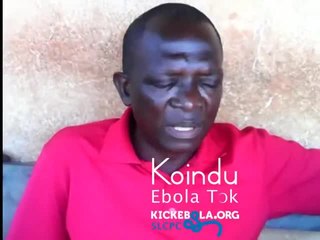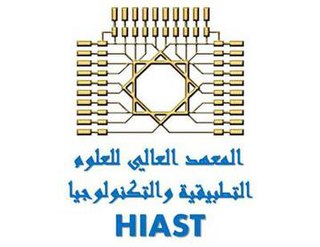Related Research Articles
A pidgin, or pidgin language, is a grammatically simplified means of communication that develops between two or more groups of people that do not have a language in common: typically, its vocabulary and grammar are limited and often drawn from several languages. It is most commonly employed in situations such as trade, or where both groups speak languages different from the language of the country in which they reside.

A creole language, or simply creole, is a stable natural language that develops from the process of different languages simplifying and mixing into a new form, and then that form expanding and elaborating into a full-fledged language with native speakers, all within a fairly brief period. While the concept is similar to that of a mixed or hybrid language, creoles are often characterized by a tendency to systematize their inherited grammar. Like any language, creoles are characterized by a consistent system of grammar, possess large stable vocabularies, and are acquired by children as their native language. These three features distinguish a creole language from a pidgin. Creolistics, or creology, is the study of creole languages and, as such, is a subfield of linguistics. Someone who engages in this study is called a creolist.
A lingua franca, also known as a bridge language, common language, trade language, auxiliary language, or link language, is a language systematically used to make communication possible between groups of people who do not share a native language or dialect, particularly when it is a third language that is distinct from both of the speakers' native languages.

A Spanish creole, or Spanish-based creole language, is a creole language for which Spanish serves as its substantial lexifier.
Hawaiian Pidgin is an English-based creole language spoken in Hawaiʻi. An estimated 600,000 residents of Hawaiʻi speak Hawaiian Pidgin natively and 400,000 speak it as a second language. Although English and Hawaiian are the two official languages of the state of Hawaiʻi, Hawaiian Pidgin is spoken by many residents of Hawaiʻi in everyday conversation and is often used in advertising targeted toward locals in Hawaiʻi. In the Hawaiian language, it is called ʻōlelo paʻi ʻai – "hard taro language". Hawaiian Pidgin was first recognized as a language by the U.S. Census Bureau in 2015. However, Hawaiian Pidgin is still thought of as lower status than the Hawaiian and English languages.
In addition to its classical and modern literary form, Malay had various regional dialects established after the rise of the Srivijaya empire in Sumatra, Indonesia. Also, Malay spread through interethnic contact and trade across the south East Asia Archipelago as far as the Philippines. That contact resulted in a lingua franca that was called Bazaar Malay or low Malay and in Malay Melayu Pasar. It is generally believed that Bazaar Malay was a pidgin, influenced by contact among Malay, Hokkien, Portuguese, and Dutch traders.

Big science is a term used by scientists and historians of science to describe a series of changes in science which occurred in industrial nations during and after World War II, as scientific progress increasingly came to rely on large-scale projects usually funded by national governments or groups of governments. Individual or small group efforts, or small science, are still relevant today as theoretical results by individual authors may have a significant impact, but very often the empirical verification requires experiments using constructions, such as the Large Hadron Collider, costing between $5 and $10 billion.
Language contact occurs when speakers of two or more languages or varieties interact with and influence each other. The study of language contact is called contact linguistics. Language contact can occur at language borders, between adstratum languages, or as the result of migration, with an intrusive language acting as either a superstratum or a substratum.
A mixed language, also referred to as a hybrid language, contact language, or fusion language, is a language that arises among a bilingual group combining aspects of two or more languages but not clearly deriving primarily from any single language. It differs from a creole or pidgin language in that, whereas creoles/pidgins arise where speakers of many languages acquire a common language, a mixed language typically arises in a population that is fluent in both of the source languages.

Peter Louis Galison is an American historian and philosopher of science. He is the Joseph Pellegrino University Professor in history of science and physics at Harvard University.

The Sierra Leonean Creole or Krio is an English-based creole language that is the lingua franca and de facto national language spoken throughout the West African nation of Sierra Leone. Krio is spoken by 96 percent of the country's population, and it unites the different ethnic groups in the country, especially in their trade and social interaction with each other. Krio is the primary language of communication among Sierra Leoneans at home and abroad, and has also heavily influenced Sierra Leonean English. The language is native to the Sierra Leone Creole people, or Krios, a community of about 104,311 descendants of freed slaves from the West Indies, Canada, United States and the British Empire, and is spoken as a second language by millions of other Sierra Leoneans belonging to the country's indigenous tribes. Krio, along with English, is the official language of Sierra Leone.
Australian Kriol also known as Roper River Kriol, Fitzroy Valley Kriol, Northern Australian Creole or Aboriginal English is an English-based creole language that developed from a pidgin used initially in the region of Sydney and Newcastle in New South Wales, Australia, in the early days of European colonisation. Later, it was spoken by groups further west and north. The pidgin died out in most parts of the country, except in the Northern Territory, where the contact between European settlers, the Chinese and other Asians, and the Aboriginal Australians in the northern regions has maintained a vibrant use of the language, which is spoken by about 30,000 people. Despite its similarities to English in vocabulary, it has a distinct syntactic structure and grammar. It is a language in its own right and is distinct from Torres Strait Creole.
Earth systems engineering and management (ESEM) is a discipline used to analyze, design, engineer and manage complex environmental systems. It entails a wide range of subject areas including anthropology, engineering, environmental science, ethics and philosophy. At its core, ESEM looks to "rationally design and manage coupled human–natural systems in a highly integrated and ethical fashion". ESEM is a newly emerging area of study that has taken root at the University of Virginia, Cornell and other universities throughout the United States, and at the Centre for Earth Systems Engineering Research (CESER) at Newcastle University in the United Kingdom. Founders of the discipline are Braden Allenby and Michael Gorman.
Interactional expertise is part of a more complex classification of expertise developed by Harry Collins and Robert Evans. In this initial formulation interactional expertise was part of a threefold classification of substantive expertise that also included ‘no expertise’ and ‘contributory expertise’, by which they meant the expertise needed to contribute fully to all aspects of a domain of activity.
Nagamese is an Assamese-lexified creole language. Depending on location, it has also been described and classified as an "extended pidgin" or "pidgincreole". Spoken natively by an estimated 40 lakhs people in the Indian northeastern state of Nagaland, it developed primarily as a means of marketplace and trade communication. Despite the official language of the state being English, Nagamese functions as a lingua franca and is spoken by nearly all Nagaland inhabitants. It is also used in mass media as well as in official state-regulated domains, including news and radio stations, education and political and governmental spheres. Nagamese is classified as a creole as, despite it being spoken as an "extended pidgin" by the majority of speakers across Nagaland, it is also spoken as the native mother tongue of the Dimasa community in Nagaland's largest city, Dimapur.
A post-creole continuum is a dialect continuum of varieties of a creole language between those most and least similar to the superstrate language. Due to social, political, and economic factors, a creole language can decreolize towards one of the languages from which it is descended, aligning its morphology, phonology, and syntax to the local standard of the dominant language but to different degrees depending on a speaker's status.

The Higher Institute for Applied Sciences and Technology (HIAST) is center of excellence for higher education, research & development in Damascus, Syria. It is linked to the Syrian Scientific Studies and Research Center.

Braden R. Allenby is an American environmental scientist, environmental attorney and Professor of Civil and Environmental Engineering, and of Law, at Arizona State University.
Nowadays, no one could still claim his pure race status. Ethnic, social and linguistic differences become each day more and more present and marked all over the world. Time, history and continuous population intermingling across boundaries led to create cosmopolitan beings, that is to say world citizens who, in spite of their singularity, manage to bring themselves together in order to create a unique and single nation. Among the nations most affected by this cross-fertilization is notably found Mauritius. The social and linguistic diversity of this country makes it unique and contribute to its wealth. It arouses curiosity, urges us to deepen our knowledge on the subject and is, to this extent, worth being studied.
Port Jackson Pidgin English or New South Wales Pidgin English was an English-based pidgin that originated in the region of Sydney and Newcastle in New South Wales in the early days of colonisation. Stockmen carried it west and north as they expanded across Australia. It subsequently died out in most of the country, but was creolised forming Australian Kriol in the Northern Territory at the Roper River Mission in Ngukurr, where missionaries provided a safe place for Indigenous Australians from the surrounding areas to escape deprivation at the hands of European settlers. As the Aboriginal Australians who came to seek refuge at the Roper River Mission spoke different languages, there grew a need for a shared communication system to develop, and it was this that created the conditions for Port Jackson Pidgin English to become fleshed out into a full language, Kriol, based on the English language and the eight different Australian language groups spoken by those at the mission.
References
- Allenby, B. (2005). Technology at the global scale: Integrative cognitivism and Earth Systems Engineering Management. In M. E. Gorman, R. D. Tweney, D. C. Gooding & A. Kincannon (Eds.), Scientific and technological thinking (pp. 303–344). Mahwah, NJ: Lawrence Erlbaum Associates.
- Baird, D., & Cohen, M. (1999). Why trade? Perspectives on science, 7(2), 231–254.
- Collins, H. M., & Evans, R. (2002). The third wave of science studies. Social Studies of Science, 32(2), 235–296.
- Fincher, S., & Petre, M. (2004). Computer science education research. London; New York: Taylor & Francis.
- Galison, P. (1997). Image & logic: A material culture of microphysics. Chicago: The University of Chicago Press.
- Gorman, M. E. (2004). Collaborating on Convergent Technologies: Education and Practice. In M. C. Roco & C. D. Montemagno (Eds.), The coevolution of human potential and converging technologies (Vol. 1013, pp. 25–37). New York: The New York Academy of Sciences.
- Gorman, M. E., Groves, J. F., & Catalano, R. K. (2004). Societal dimensions of nanotechnology. IEEE Technology and Society Magazine, 29(4), 55–64.